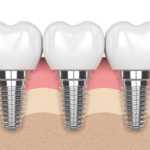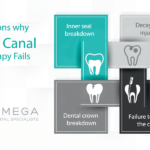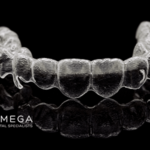What to Expect During the Wisdom Teeth Extraction
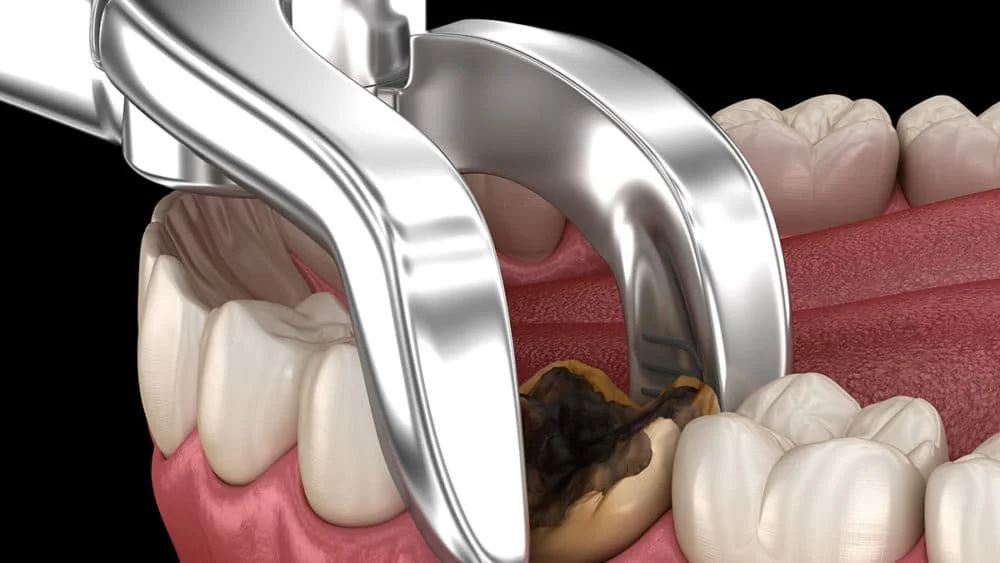
Wisdom teeth extraction typically involves the following steps:
- Consultation with a dentist or oral surgeon to assess the need for extraction
- Anesthesia (local, IV sedation, or general) to numb the area and manage pain during the procedure
- The oral surgeon will loosen the wisdom teeth and remove them from the socket
- After the extraction, you will be instructed to bite down on gauze to control bleeding and promote healing
- Pain and swelling are normal after the procedure, but can be managed with over-the-counter pain medication and ice packs
- Follow-up appointments to monitor healing and ensure proper recovery.
When the oral surgeon reviews your X-rays during your routine checkup, it may be determined that the wisdom teeth are causing (or will be causing) you trouble. Research shows that early prediction and intervention leads to improved outcomes for the patient. This is because the longer a “problematic” tooth is allowed to grow, the larger it becomes, the deeper its roots go and the more misaligned and impacted it may become.
Fortunately, diagnosis typically occurs around 12 to 13 years. But if you are diagnosed later, you will want to discuss options with your doctor as the procedure will likely be more complex. Wisdom teeth are nothing more than the third and final set of molars that typically erupt during the late teen years. In some cases, molars may not erupt until the early 20s. While there are cases where wisdom teeth can be a benefit to oral health when they are properly and healthily aligned, there are other cases where they may be misaligned or impacted. When wisdom teeth are impacted or emerge in less than a straight angle, they require removal. In extreme cases, wisdom teeth can be so misaligned that they may emerge horizontally. This is a major concern because this misalignment can affect other healthy surrounding teeth. Misaligned wisdom teeth can also cause chronic pain as well as infection and disease in surrounding teeth.
Table of Contents
Consultation before wisdom teeth removal
The Doctor is looking for signs of current or future impacted teeth. While most of us have room in our jaws for the 32 permanent teeth that will grow naturally in our mouths, there are many people who have jaws that just cannot accommodate all of their teeth. If there is no space for them, they may not be able to erupt from the surface to “come in” normally. This can affect chewing, cleaning, the jaw and your other teeth.
Perhaps the biggest concern when it comes to poorly aligned wisdom teeth is that they can damage and crowd out adjacent teeth affecting the jawbone and even local nerves. The very fact that permanent damage can occur is reason enough to seriously consider having wisdom teeth removed when necessary. A wisdom tooth is impacted if it remains enclosed within the soft tissue of the jawbone. A wisdom tooth is also considered impacted if it only partially erupts. In some cases, this could be even more alarming because a slight opening in the gum tissue may allow bacteria to enter around the tooth resulting in infection. Common symptoms of this type of impacted tooth problem include pain, jaw stiffness, and swelling as well as general overall illness.
What To Expect During The Routine Pre-Extraction Exam
The removal of wisdom teeth is in most cases an outpatient type of surgery. This means that the patient can expect to return to work or their home on the same day once surgery has been completed. Patients with more complicated wisdom tooth positioning or with more advanced stages of wisdom tooth development may require longer surgery. Your oral surgeon will discuss all the particulars in this regard and what to expect during a routine pre-extraction exam. The easiest type of wisdom tooth extraction is one where the wisdom tooth has fully erupted through the gum line. Conversely, a wisdom tooth that is impacted or that remains underneath the gums, or that is embedded in the jawbone will require that the gums be incised. This incision is necessary so that the removal of any portion of bone covering the wisdom tooth be safely cleared away.
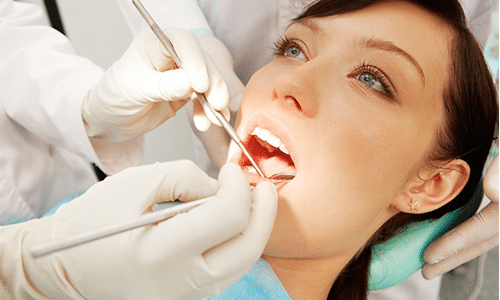
Types of Impacted Teeth
There are three kinds of impaction:
- Soft Tissue Impaction –This is inadequate room for the gums to recede so that the tooth can be adequately cleaned. This can lead to infection and decay.
- Partial Bony Impaction – The tooth can partially erupt, but it cannot serve its function as a tooth because it is only partially uncovered. Again, it will be difficult to clean.
- Complete Bony Impaction – The tooth has no space to erupt. It is stuck in the jaw bone and is often in a position (not upright) which makes it difficult to remove. Jawbones come in many shapes and sizes. This removal can be extremely complex.
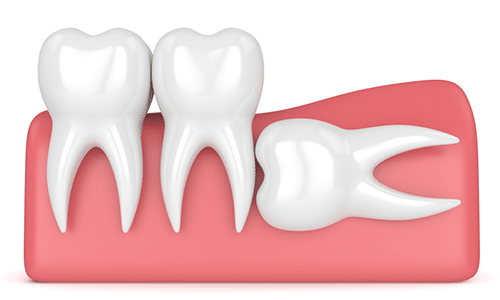
What To Expect During The Pre-Extraction Exam
The removal of wisdom teeth is in most cases an outpatient type of surgery. This means that the patient can expect to return to work or their home on the same day once surgery has been completed. Patients with more complicated wisdom tooth positioning or with more advanced stages of wisdom tooth development may require longer surgery. Your oral surgeon will discuss all the particulars in this regard and what to expect during a routine pre-extraction exam. The easiest type of wisdom tooth extraction is one where the wisdom tooth has fully erupted through the gum line. Conversely, a wisdom tooth that is impacted or that remains underneath the gums, or that is embedded in the jawbone will require that the gums be incised. This incision is necessary so that the removal of any portion of bone covering the wisdom tooth be safely cleared away.
X-Rays Are Used To Determine The Presence Of Wisdom Teeth
It should be noted that wisdom teeth that only partially erupt are typically more prone to tooth decay and problematic gum disease. Patients of any age may find that it is difficult to brush and floss a partially erupted wisdom tooth because of its hard-to-reach location. The simple fact that a wisdom tooth is awkwardly positioned makes it more challenging and difficult to maintain good oral hygiene of those particular teeth. The best way for your dentist to know for sure the exact positioning of wisdom teeth is to take x-rays. These x-rays are used periodically to determine the presence of wisdom teeth and their overall alignment. When wisdom teeth are impacted or misaligned, your dental care provider will suggest an oral surgeon for additional evaluation.
How Do Doctors Determine that Wisdom Tooth Removal is the Solution?
They will evaluate the space in your mouth as you reach adulthood. In comparison to the rest of our bodies, the head does not grow that much through adolescence, so a doctor can easily assess the room you have or do not have for those third molars.
If the surgeon determines that your teeth need to be removed, you should strongly consider not delaying the procedure. Waiting could lead to serious complications.
Some of the complications of not having a wisdom tooth removed that needs removal include:
-
Odontogenic Cysts
-
Teeth and Bone Infection
-
Teeth Crowding
-
Damaging the other teeth.
What is an Odontogenic Cyst?
An odontogenic cyst is a type of noncancerous (benign) growth that originates from the tissues that form the teeth. It can cause swelling or a lump in the jaw and can sometimes lead to the destruction of the surrounding bone. Odontogenic cysts are usually diagnosed through imaging tests such as x-rays or CT scans and can be treated by surgical removal or marsupialization (draining the cyst while leaving it intact).
Teeth and Bone Infection
Bacteria are always present in the mouth. Normally proper dental hygiene, visits to the dentist and our immune system keep the bacteria in check. But when the tooth is not “coming in” correctly, it is hard to clean and care for. This leads to pericoronitis (a localized gum infection). Localized simply means that the infection is not throughout the mouth. It is only in one place due to a very specific cause. This infection will cause recurring pain, swelling and difficulty chewing and swallowing.
Untreated gum infections lead to receding gums and eventually the loss of teeth that you want to keep as long as you can. In other words, removing the wisdom teeth may be necessary to save the others.
Crowded Teeth
If you do not have enough room, your wisdom teeth have nowhere to go. They push against the other teeth. As each tooth is pushed, it pushes the tooth in front of it. This normally results in the front teeth folding in or overlapping to try to make room. There are other causes for tooth crowding, but retained wisdom teeth can be a contributing factor. It is most apparent after someone’s teeth were straightened with braces.
Damage to the Other Teeth
Since it is hard to clean an impacted tooth, the infection spreads to the surrounding gums and other teeth. And, as stated above, the pressure from the tooth that leads to crowding could also result in damage to the other tooth.
Preventive Teeth Extraction
In some situations, oral surgeons will recommend that patients have their wisdom teeth extracted before problems ever develop. This is a proactive approach to ensuring that an impacted wisdom tooth, infections or misalignments do not occur. Ultimately, removing wisdom teeth in this way is designed to protect healthy, strong and correctly aligned surrounding teeth. It should also be noted that removing wisdom teeth early on is easier and less complicated than waiting several years to perform the same procedure. In essence, wisdom tooth extraction is easier when working with teens and younger adults than it is in working with older people. Young people enjoy the benefit of having wisdom teeth roots that are less than fully developed and a less dense bone mass. Also, younger people recover quickly with faster healing times than older adults.
What to Expect on the Day of the Procedure
Most people opt to be sedated, but your options will be discussed. The procedure is performed in a room that is designed to provide safety during the procedure. Modern equipment in addition to a trained professional is there to monitor you throughout the procedure and your post-surgical observation.
If you opt for full sedation, remember that not eating 6-8 hours or drinking more than some sips of water before the procedure is essential. Anesthesia can cause nausea and vomiting. If you are under when this occurs, you may be unable to prevent fluids from entering your lungs, which is very dangerous.
The procedure only takes 30 to 90 minutes, but depending on the type of anesthesia you may need to remain under observation for much longer and have someone drive you home when you are released.
As with all medical professions, advances in medicine make the healing process much faster and less prone to complications than in the past.
You will be provided with a post-operative plan, and it is critical that you follow it to avoid most of these complications.
What Happens after the Procedure?
In some less common cases, the tooth must be extracted in a series of steps where small sections of a tooth are removed as opposed to having the tooth removed in one complete piece. The outpatient procedure known as wisdom tooth extraction is largely outpatient in nature. This means that the dentist will use a local anesthesia to numb any potential pain. Patients have a few choices regarding sedatives during surgery. This includes some different types of sedation medications such as nitrous oxide or even an oral sedative like Valium. Also, intravenous sedatives can be used to produce similar effects. Many patients choose nitrous oxide simply because they will be able to drive home on the same day following surgery. When more powerful sedatives are used, it is important for patients to arrange to have someone drive them home following their outpatient surgery. This information is provided to help patients understand the basics of wisdom tooth removal. Contact your dental care provider for more details on this routine highly successful oral surgery.
Recovery time is typically 3-5 days. Your doctor will write you a prescription for a painkiller and possibly antibiotics.
On day 1, you may experience pain as the anesthesia wears off fully. You will still be bleeding so cover your pillow. An ice pack placed on the jaw with help reduce the swelling that will likely happen on day two. By day three the swelling should subside. Most people are fully functioning in three days, but don’t do anything too strenuous. And if you need more time, take it. Everyone recovers differently.
Your post-operative plan will lay out common post-operative complications to watch for. If you experience these, you should contact our office. Most of these complications are temporary and will resolve themselves. Others may require intervention. In very rare instances they may lead to permanent damage. Your doctor will discuss these risks before the procedure. Following your post-operative plan will help prevent most complications.
How Much Does Widom Tooth Removal Cost? Does Insurance Pay For Wisdom Teeth Extraction?
The cost of the procedure is determined by how complicated the procedure will be. The type of impaction, the position of the tooth and other exacerbating conditions could make the procedure more complex. The type of anesthesia will also contribute to the final cost.
Insurance companies are independent entities so their rules for coverage may vary. We will provide necessary information and records to your company to assure that you can obtain the maximum coverage to which your plan entitles you.
What If I Still Have Questions?
This page is intended to supplement your consultation with the doctor — not replace it. You will have an opportunity to sit down with the doctor and ask additional questions. The doctor will also go into more detail related to your specific circumstances and make sure you fully understand. Please do not hesitate to call us before or after the procedure if you have more questions. We are happy to help. We want the wisdom tooth removal experience to be the best it can be.
January 30, 2023What to Expect During the Wisdom Teeth Extraction
October 23, 2022Wisdom Tooth Removal Cost
July 26, 2022Should I Have My Wisdom Teeth Removed Before I Get Braces?
July 26, 2022Complete Guide to Wisdom Tooth Removal

